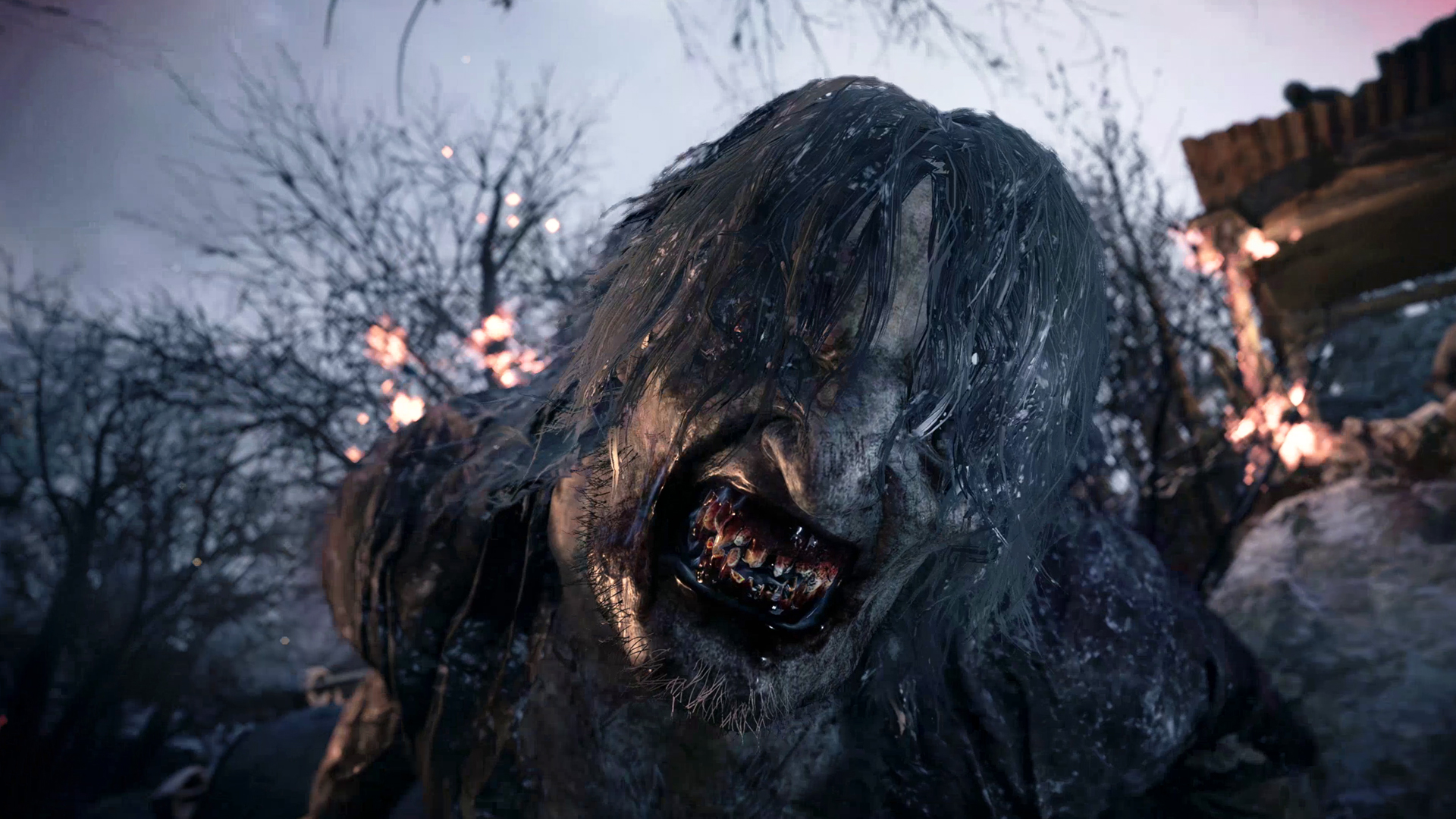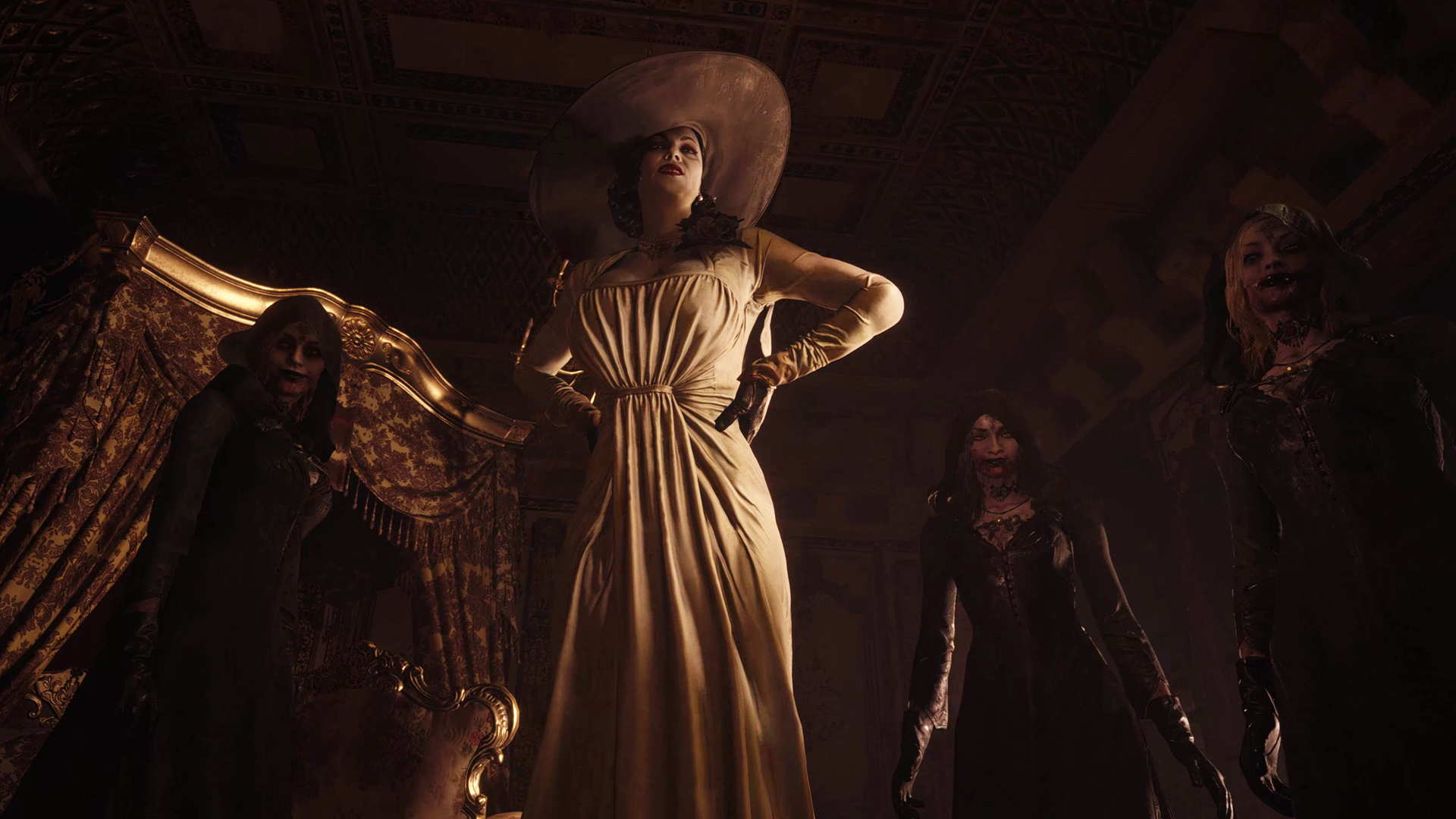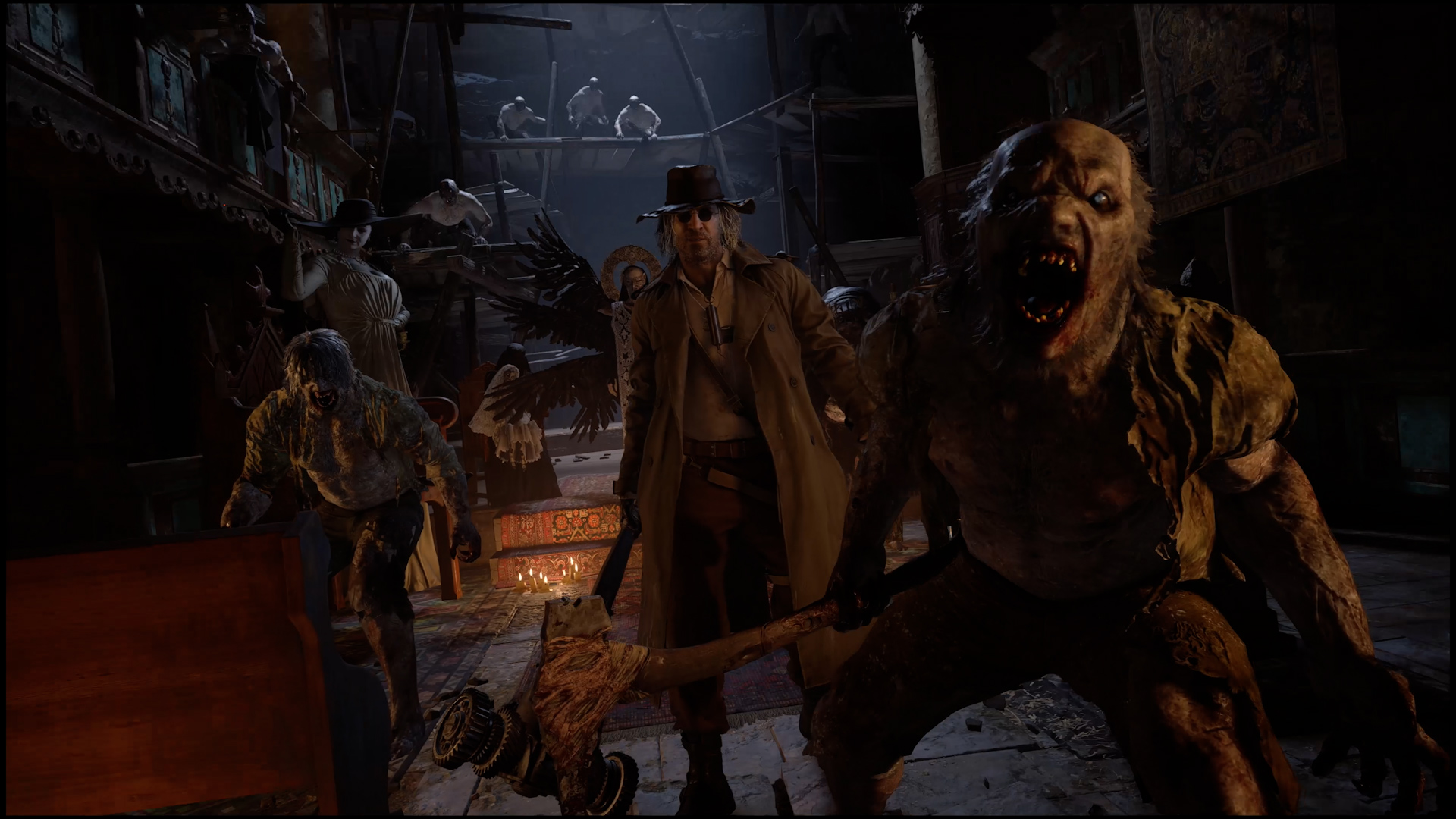Gruesome violence is essential to Resident Evil Village
Unprecedented brutality and gore marinates every scene, but there's a good reason for all that visceral detail.

Resident Evil games are violent. Folks get their parts ripped off, limbs get eaten, entrails spill across the floor on a regular basis. The gore and violence on display is deliberately intense, designed to make you feel upset, and has been increasing exponentially since the series began. In the original you had zombies playfully biting your neck, but by the seventh instalment your hand was getting severed by a rusty chainsaw—one of several atrocities committed against your unfortunate appendage. With Resident Evil Village now upping every ante when it comes to horrific depictions of brutality, you might wonder what point there is to any of it. Does the violence in the Resident Evil series serve any purpose at all, beyond shock value?
Horror stories—particularly about the undead—have always been vectors for some kind of message; we're drawn to the genre because it highlights unconscious fears and allows us to confront ideas we would normally avoid. Night of the Living Dead is often viewed as a critique of Cold War politics, American racism, and societal norms in the 1960s. Earlier stories about zombies and zombie-like creatures play on existential fears about death and disease, as well as xenophobia.

Resident Evil, being conceived in the 1990s, has always had a particular bone to pick with big business. Late-stage capitalism secretly eating away at the juicy flesh of society. The Umbrella Corporation is the classic evil force in the series—an incalculably massive pharmaceutical corporation that looks all nice and helpful on the surface but uses its wealth and research to make monsters and plagues. Early games were not at all subtle about this, stating explicitly that this obviously bad company did very naughty things and now everyone is a zombie. Players are confronted with the immediate aftermath of corporate interests gone feral, forced to gun down ordinary people who got in the way, attacked by inside-out versions of formerly good dogs.
In Resident Evil 4 through to 6, the games tell more bombastic and comical stories about kidnapped girls and zombie presidents. As a result, the violence feels silly and detached, like a theme park ride. Violent scenes are played for fun, and don’t feel personal or upsetting beyond eliciting a disgusted reaction. Resident Evil games just weren’t about anything anymore, and violence for the sake of violence is pretty dull.
Resident Evil 7 and Village have marked a shift back to those lost horror roots, as well as being a big, gross jump in terms of violence. Part of that is down to the improved technology and fidelity at Capcom's disposal compared to the six or so polygons the franchise started with, but there's more to it than just developers having fun blood simulation toys.

Both the latest games in the series are set in a post-Umbrella world (even if Umbrella never truly dies); they tell stories that are less about some big evil, and more about the lasting, destructive effects of the capitalism that ran rampant in previous games. Unknown entities either found or continued research started by Umbrella and, before you know it, infected ships holding discarded bioweapons are washing up in Louisiana, and strange materials are being accessed by religious figures in snowy Romanian villages. Resident Evil 7 and 8 don't want to tell you about the corporate types who made money off suffering, they want you to know about the suffering itself, and the people hurt by a society that cares more about money and power than human life.
All the violence begins to make a lot more sense because the victims matter. The Baker family were innocent, but the system which corrupted and killed them doesn't care, and the horrifying violence they inflict on Ethan Winters—as well as the moral and physical nightmares inflicted on them—are necessary to understand the point the game wants to make.
The biggest gaming news, reviews and hardware deals
Keep up to date with the most important stories and the best deals, as picked by the PC Gamer team.
The same goes for Village, where the residents of the titular settlement are fed into an uncaring meat grinder to benefit the rich and powerful Lords. We need to see all those ordinary people die in horrible ways, because it shows us just how little the controlling forces of this world care. Making the villains of Village religious leaders and not-so-exaggerated reflections of classic aristocracy isn't a coincidence, it's a direct parallel to the modern gulf between rich and poor. Lady Dimitrescu sits in her over-decorated home, literally looking down on the village, and we see that power dynamic emphasised when Ethan spots the castle looming in front of him at the start of the game. Dimitrescu plays at feudalism, and keeps the dirt and suffering of her victims low down, out of sight. Which means it's important that we see it.

At one point, Ethan retreats into the dungeon area of Castle Dimitrescu and finds it full of sword-wielding zombies. Worse than being stabbed, bitten and ravaged by these monsters is the revelation that these are failed experiments—women from the area who weren't lucky enough to become sexy vampires. It's a graphic reminder of how this world treats the vulnerable, and your only options as a player are to ignore it or put them out of their misery.
Later encounters with the other Lords of the Village present us with the same gulf between the haves, who do whatever they want, and the have nots, who do what they're told. Heisenberg experiments on the corpses of villagers without their consent, for his own selfish ends, and then makes you pick apart the bodies; Moreau does his own awful trials on the unwilling living mostly because his beloved leader makes the order. Beneviento's section of the game is the least openly violent and—not coincidentally—she displays the least contempt for the villagers, presenting a more tragic and personal story amid this world of bloody nightmares. The Lords themselves are also victims of an even higher power, stuck in the cycle of trickle-down violence that makes them slaves to their boss, and eventually rewards them with only a bloody death.
While the violence in the series is increasingly confronting, having story and subtextual reasons means it always feels like it has a place—at least in the earliest and most recent entries. These scenes push the darker message about the fate of the masses in a world where the powerful have no need of restraint. It's fun to laugh at how much trauma Ethan's hands go through, but it's bombastic, not gratuitous. Resident Evil wants us to be unable to look away from the atrocities of its world, particularly as it shifts focus from villains like Umbrella to victims like the Bakers and the residents of the village. Everything is chaos, life is unfair, people experience brutality at the hands of powerful forces, and that should be painful to watch. Then, at the end of everything, you get to inflict a little brutality on the powerful, as a cathartic treat.

